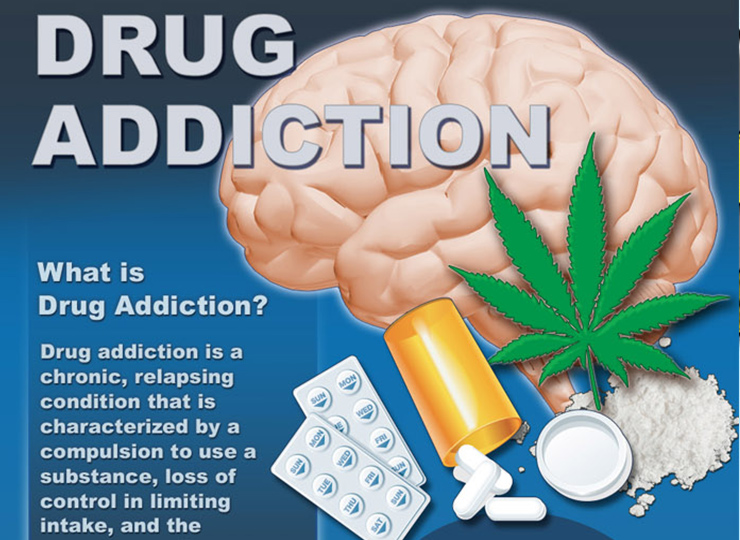Designer drugs and synthetic marijuana

Designer drugs and synthetic marijuana are both serious substances of abuse irrespective of your state laws
Designer drugs and synthetic marijuana: The risky trial
To understand what synthetic marijuana and Bath salts and there origin, you’ve got to know what designer drugs are. From the expert’s opinion at AWAREmed Health and Wellness Resource Center, doctor Dalal Akoury defines designer drugs synthetic (chemically made) version of an illegal drug that was slightly altered to avoid having it being classified as illegal. It is essentially an experiment by a chemist done to create a new drug that can be sold legally (on the Internet or in stores), allowing dealers to make money without breaking the law. As law enforcement catches up with new chemicals that are so created and makes them illegal, manufacturers devise altered versions to steer clear of the law. So the cycle repeats.
The most disturbing point with this substances is that their producers often introduce them to the market either through online sales or in certain stores as “herbal smoking blends”, and yet again, others are disguised as products labeled “not for human consumption” such as “herbal incense,” “plant food,” “bath salts” or “jewelry cleaner”. All these are done in order to mask their intended purpose and avoid health and safety rules says doctor Akoury. And because of the ever increasing growth in the number of chemicals being developed, majority of designer drugs users are ignorant and without knowledge of understanding the content of the drugs they are using. This is further made complicated by the fact that any small modification made to a known drug may result in a completely new drug with different effects, thereby causing confusion to users and because of that they cannot predict the impact on health from the substances they are experimenting with.
Designer drugs and synthetic marijuana: Ecstasy
Ecstasy is usually taken orally in pill, tablet or capsule form. This is not a very good substance since taking more than one at a time is impacts negatively to users and this process of taking more than a tablet is known as “bumping.” Therefore ecstasy is a synthetic (man-made) drug made in a laboratory. Producers of these substances are likely to add anything they choose to the drug, such as caffeine, amphetamine and even cocaine. Ecstasy is illegal and has effects similar to hallucinogens and stimulants. The pills are of different colors and are sometimes marked with cartoon-like images. With all those facts, doctor Akoury is reiterating that, users’ needs to be warned that mixing Ecstasy with alcohol is extremely dangerous and can be lethal. Moreover, the simulative effects of drugs such as Ecstasy enable the user to dance for long periods, and when combined with the hot, crowded conditions found at raves, can lead to extreme dehydration and heart or kidney failure.
Designer drugs and synthetic marijuana: Short and long-term effects
Finally, some of the adverse effects of such drugs may include faintness, chills or sweating, muscle tension, impaired judgment, depression, blurred vision, sleep problems, false sense of affection, nausea, severe anxiety, drug craving, involuntary teeth clenching, confusion, paranoia in the short-tern while the prolonged use causes long-lasting and perhaps permanent damage to the brain, affecting the person’s judgment and thinking ability. That should motivate you to schedule for an appointment with doctor Akoury today for a more professional touch and speedy recovery.
Designer drugs and synthetic marijuana: The risky trial
http://www.I-AM-I.com/wp-admin





 Most of these synthetic cannabinoids are either solids or oils as they exist in pure state. Smoking mixtures are usually sold in metal-foil sachets, typically containing 3 g of dried vegetable matter to which one or more of the cannabinoids have been added. Typically, a solution of the cannabinoids has been sprayed onto the herbal mixture to give it the drug effect. Just like any other business oriented producer you will find a number of plants listed on the packaging but the plants mentioned on the packaging may not even be present. This is utmost dangerous as you may be using these spices thinking you are safe based on the ingredients wrote on the packaging while in real sense you are using substances you do not even know. These spices are often sold while containing high amounts of Vitamin E which is purported to be used in masking the analysis of the most active cannabinoids. The producers of these spices will put more cannabinoids in the samples to confound the forensic chemical detection.
Most of these synthetic cannabinoids are either solids or oils as they exist in pure state. Smoking mixtures are usually sold in metal-foil sachets, typically containing 3 g of dried vegetable matter to which one or more of the cannabinoids have been added. Typically, a solution of the cannabinoids has been sprayed onto the herbal mixture to give it the drug effect. Just like any other business oriented producer you will find a number of plants listed on the packaging but the plants mentioned on the packaging may not even be present. This is utmost dangerous as you may be using these spices thinking you are safe based on the ingredients wrote on the packaging while in real sense you are using substances you do not even know. These spices are often sold while containing high amounts of Vitamin E which is purported to be used in masking the analysis of the most active cannabinoids. The producers of these spices will put more cannabinoids in the samples to confound the forensic chemical detection.




